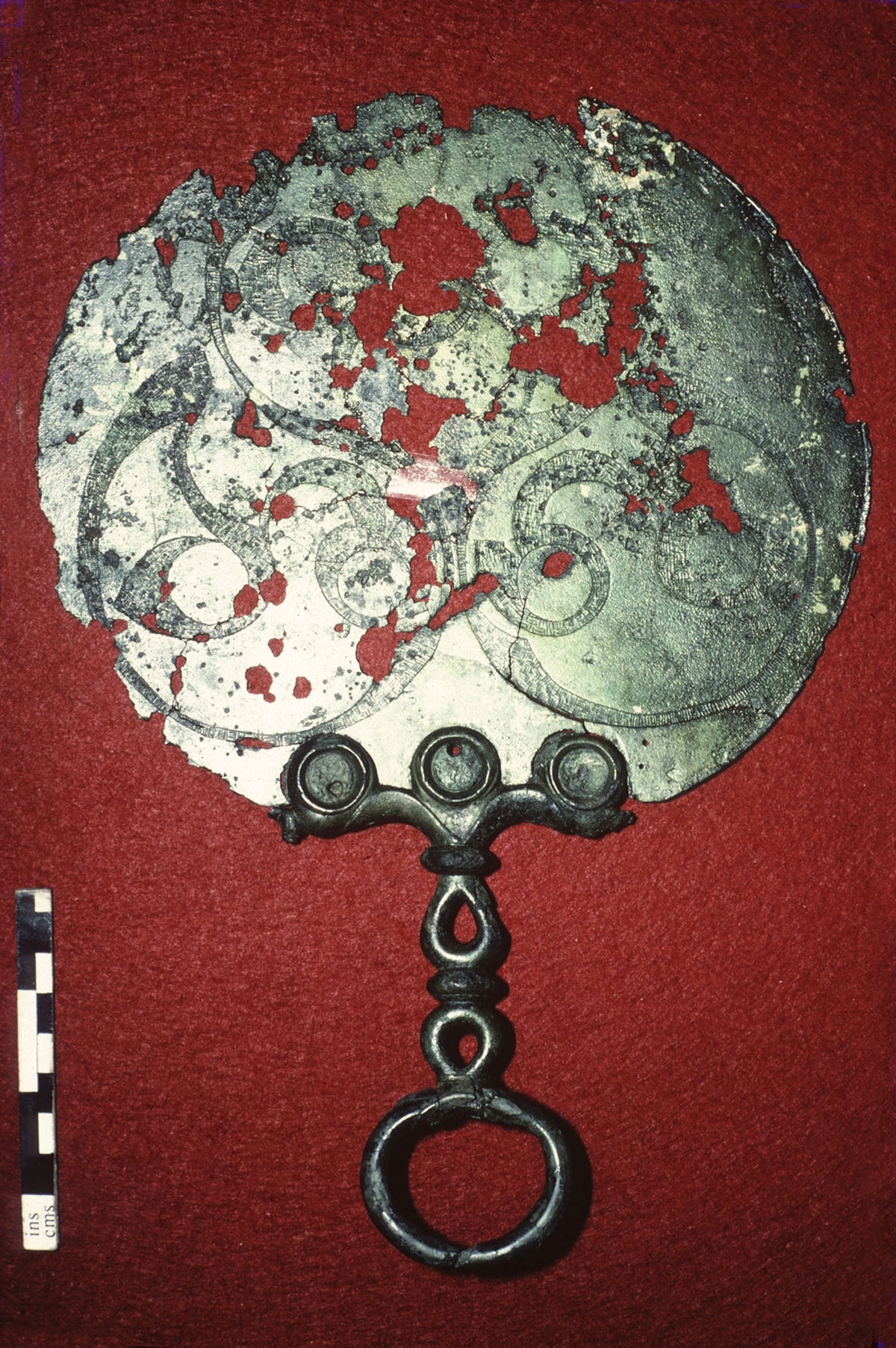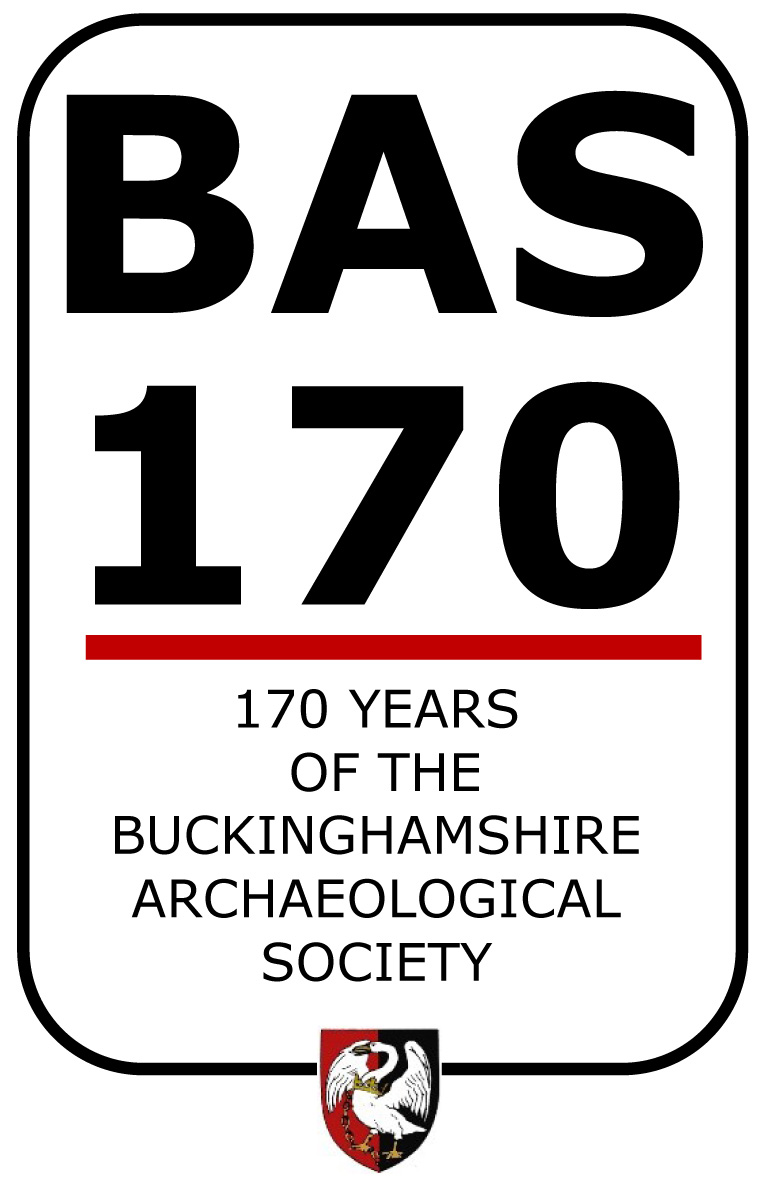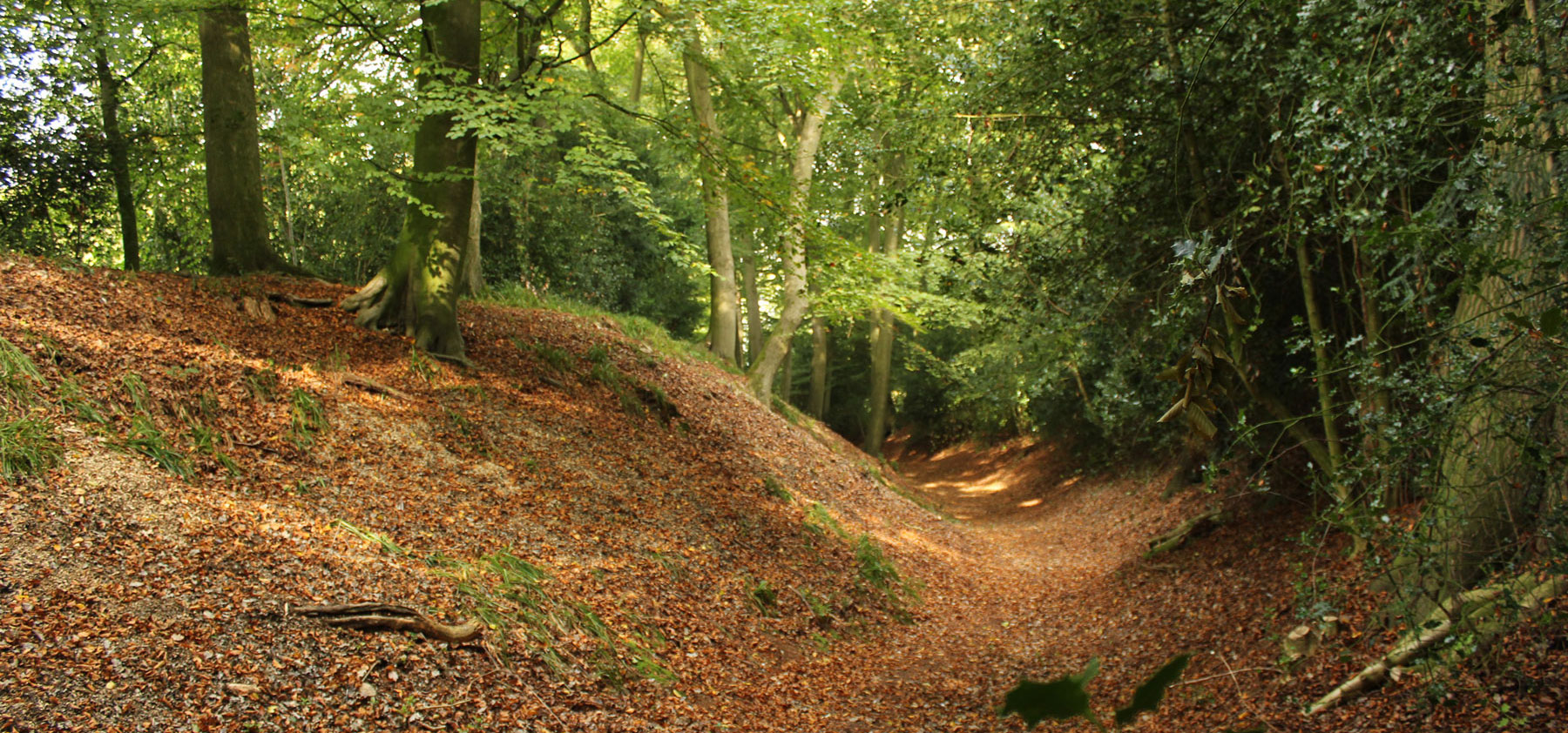
|
|
|
|
|
|
|
|
|
|
|
|
|
|
|
|
|
|
|
|
|
|
|
|
|
|
|
|
|
|
|
|
The Dorton mirror – from the first century BC
A HISTORY OF BUCKINGHAMSHIRE IN TWELVE OBJECTS

The Dorton mirror (right) dates from the Iron Age, just before the Roman conquest of Britain.
IN 1977 AN ENORMOUS pipe-trenching machine carved its way across a hill near Dorton in mid-Buckinghamshire. At intervals an archaeologist from the County Museum peered in the hole to see if anything interesting had exposed. He noticed an infilled pit showing in one side of the trench so he probed it with his trowel, but found nothing and moved on.
A day or two later two of the men working on the pipeline brought to the museum some large bits of pottery they had collected from the adjoining mound of waste soil. These were rapidly identified by said archaeologist as pieces of the massive imported wine jars called amphora.
Panic!
A rapid return to Dorton confirmed that the pot had been found near the infilled pit. In searching the massive heap of spoil from the trench, the edge of a thin sheet of metal sticking out of a big clod of clay was spotted. It was obviously something significant. The whole clod was carefully taken back to the museum's conservator.
It soon became clear that inside the lump was a complete bronze Iron Age mirror, dating to shortly before the Roman conquest. On the back it was decorated with typically swirling symmetrical Celtic ornament. Nothing like it had been found in Buckinghamshire before.
But the story doesn't end there. With the assistance of the Department of the Environment, a detailed excavation of what was left of the pit was soon arranged. The remnant of the pit was found to contain a complete drinking cup, pieces of two flagons imported from Gaul and a metal ring of uncertain use.
Meanwhile back at the lab, the conservator's careful work showed that the mirror lay in a fragmentary wooden box which also contained cremated human bone. The museum's archaeological group pieced together all of the collected bits of pottery.
Gathering all the information together it was clear that this was the burial of a Celtic lady of high status. Her cremated remains had been placed in the box with the mirror – perhaps her favourite possession. Three large wine jars from the Mediterranean, together with her personal drinking cup and two flagons, had also been placed in the grave.
The find is the only one of its type to be excavated in Buckinghamshire. Similar burials have been recorded in Hertfordshire and Essex (some with up to five amphorae) in the territory of the late Iron Age tribe known as the Catuvellauni. Perhaps our lady came from that area but had married a local chieftain?
Buckinghamshire's ‘Iron Age’ probably commenced about 600 BC, long before this burial took place. Many small Iron Age settlements have been excavated in the county. None are now visible, but you can still get a feel for this remote period by visiting one of the county's hillforts, for instance at Bulstrode near Gerrards Cross, Ivinghoe Beacon, West Wycombe or Danesborough near Wavendon.
Or you could just wander round Aylesbury Old Town – the whole of which was built inside Aylesbury's own hillfort!

ARTICLE BY MIKE FARLEY.
The Dorton mirror is Object 4 in the series ‘A History of Buckinghamshire in Twelve Objects’, marking the 170th anniversary of the founding of the Buckinghamshire Archaeological Society in 1857. The mirror itself can be seen in the Bucks County Museum, which is also the base of the Bucks Archaeological Society.
 The impressive ditch that surrounds Cholesbury's Iron Age hillfort.
The impressive ditch that surrounds Cholesbury's Iron Age hillfort.